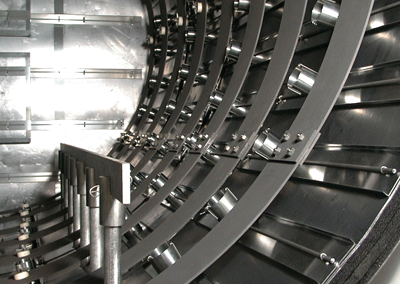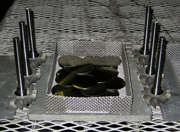Stretching the service life of a hot zone-one of the most expensive consumables in a vacuum furnace-is of prime importance to the furnace owner. Proper care and maintenance can slow down hot-zone deterioration, which directly translates to cost savings. Hot-zone service life is directly related to the type of heat treating process used in a vacuum furnace and to the severe thermal stresses imposed by continuous vacuum-furnace cycles. Distortion and contamination are the main factors causing a breakdown of hot-zone components. Distortion is inevitable because thermal cycling is inherent to the process. However, periodic inspection and remediation of hot-zone components together with thorough component cleaning can extend service life.
Two main types of hot zone construction used in vacuum furnaces today are an all-metal zone and a carbon-felt zone. An all-metal zone consists of several layers of sheet metal, such as molybdenum, stainless steel, and tantalum, separated by channels. The choice of material depends on operating conditions. For example, a zone that will be subjected to an operating temperature of 2400°F (1315°C) could consist of two inner layers of molybdenum backed by three layers of stainless steel. A hot zone intended for use at temperatures to 2600°F (1430°C) generally is made entirely of molybdenum. Reflective heating is used in an all-metal zone; that is, radiation from heating elements is reflected off the inner layer of molybdenum back to the parts being treated. Heat is contained in the hot zone through the use of channels, which create gaps between each sheet metal layer. Each gap creates an area of insulation with each successive layer being cooler.



